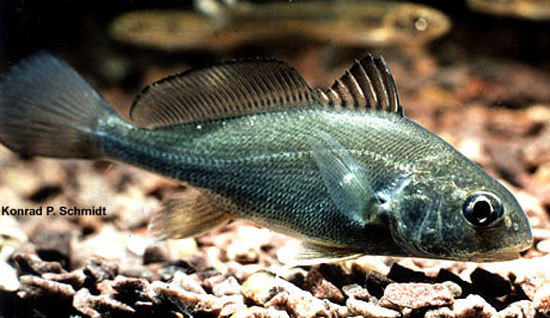| Sciaenidae (Drums or croakers) |
| 95 cm TL (male/unsexed); max.weight: 25 kg; max. reported age: 13 years |
|
demersal; freshwater; depth range - 30 m |
| North and Central America: St. Lawrence-Great Lakes, Hudson Bay and Mississippi River basins from Quebec to northern Manitoba and southern Saskatchewan in Canada and south to the Gulf; Gulf Coast drainages from Mobile Bay in Georgia and Alabama through east Mexico to Rio Usumacinta system in Guatemala. |
|
|
| Occur in bottoms of medium to large rivers and lakes (Ref. 557, 10294). Adults feed on aquatic insect immatures such as mayflies (Hexagenia), amphipods, fish (especially shad and young drum), crayfish and mollusks. Larval stages of drum consume larvae of other fishes, while young fishes utilize zooplankton (Ref. 10294). Known to produce sound. L-shaped otoliths are collected as 'lucky stones' (Ref. 557). Utilized fresh and can be pan-fried and broiled (Ref. 9988). |
|
Least Concern (LC); Date assessed: 03 February 2019 Ref. (130435)
|
| harmless |
Source and more info: www.fishbase.org. For personal, classroom, and other internal use only. Not for publication.

